The Lu are known through their traditional costumes which appear more or less like clothes of modern fashion but contain the special cultural messages of an ethnic group of nearly 5,000 people.
Each Lu family has its own weaving loom and spinning wheel. Almost all local people are skilled in the “enclosed” production process from cotton growing, yarn spinning, weaving, dying, and embroidery to tailoring. A Lu woman’s role in families and hamlets is evaluated through the quality of textile products they make.
The Lu women’s scarves are 40cm in length and 30cm in width. On the black background, both ends are woven with 18 alternate white thread lines of different sizes and decorated with tassels.
The scarves are folded in quarters lengthwise and wound around chignons worn on the left side of their heads. Scarf wearing not only makes Lu women beautiful but also keeps their hair tidy for daily activities.

Each Lu family has its own weaving loom and spinning wheel. Photo: Le Minh/VNP
The Lu women pay much attention to making costumes.

The Lu women in their traditional costume.
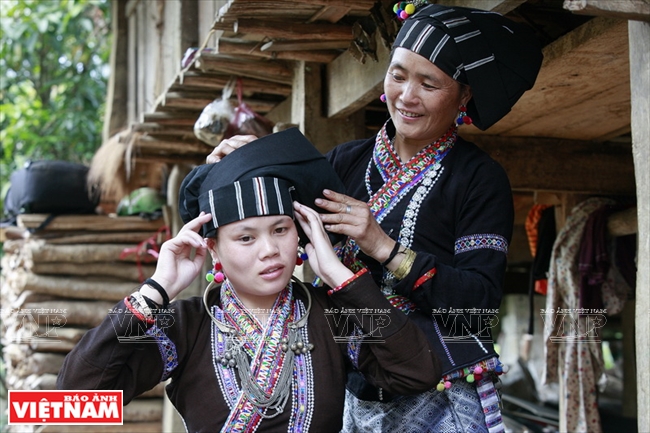
The scarves are folded in quarters lengthwise and wound around chignons worn on the left side of their heads.
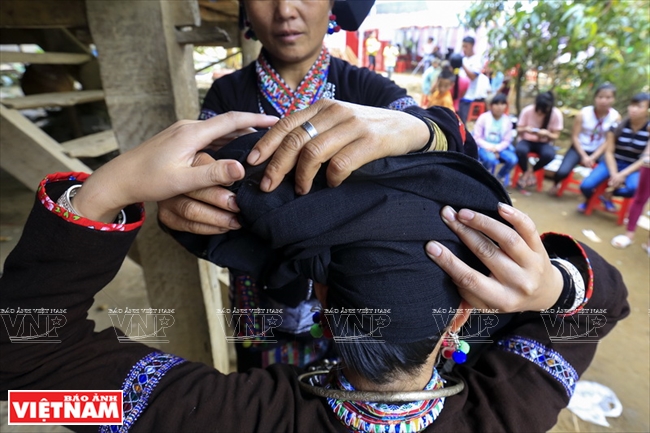
Scarf wearing not only makes Lu women beautiful but also keeps their hair tidy for daily activities.
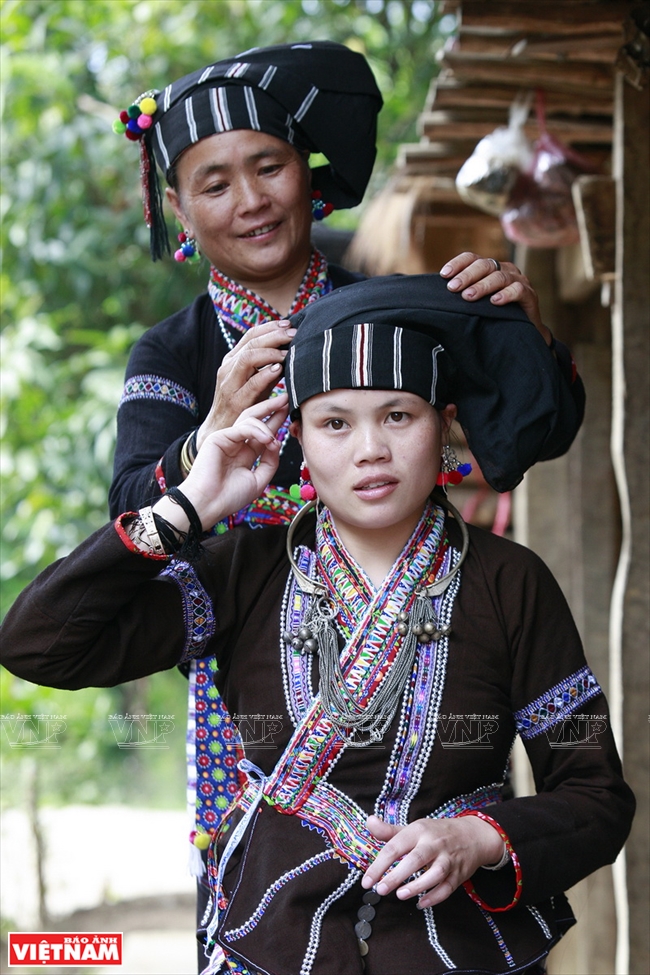
The Lu women also use beads to decorate their costumes.
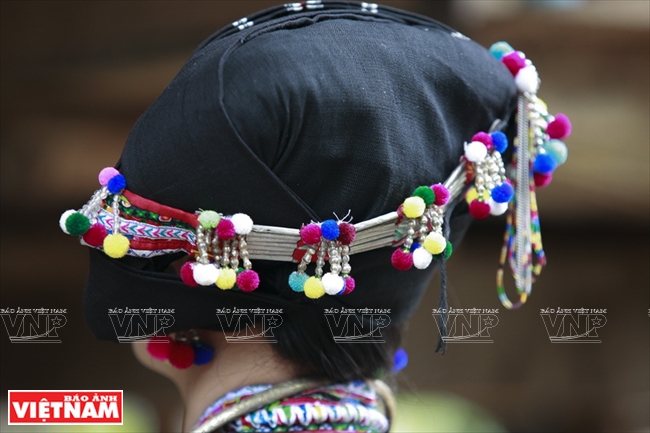
The Lu women’s scarves are 40cm in length and 30cm in width. On the black background, both ends
are woven with 18 alternate white thread lines of different sizes and decorated with tassels.
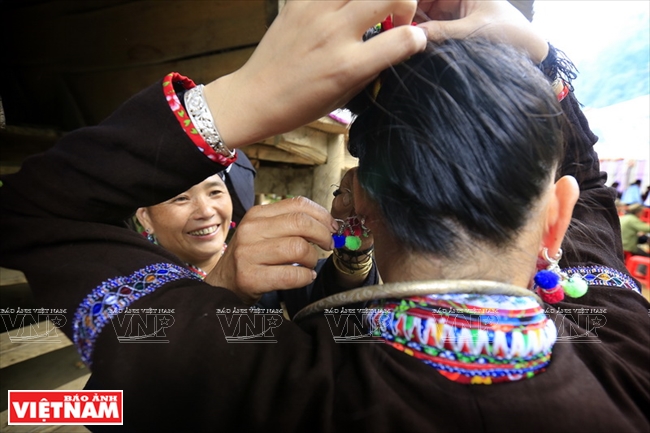
Earrings are in the same tone with thread lines.
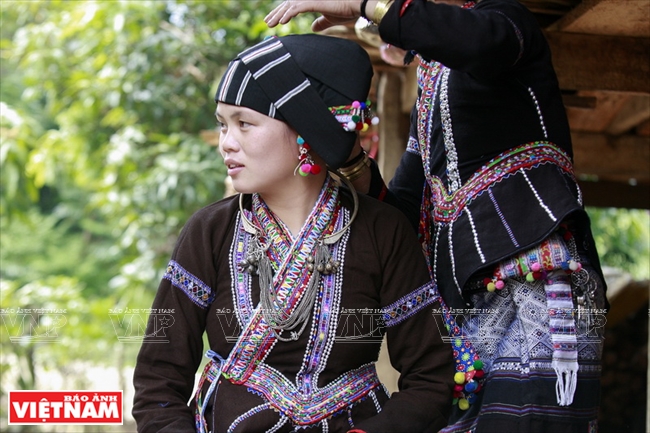
On special occasions, the Lu women often wears silver necklaces.
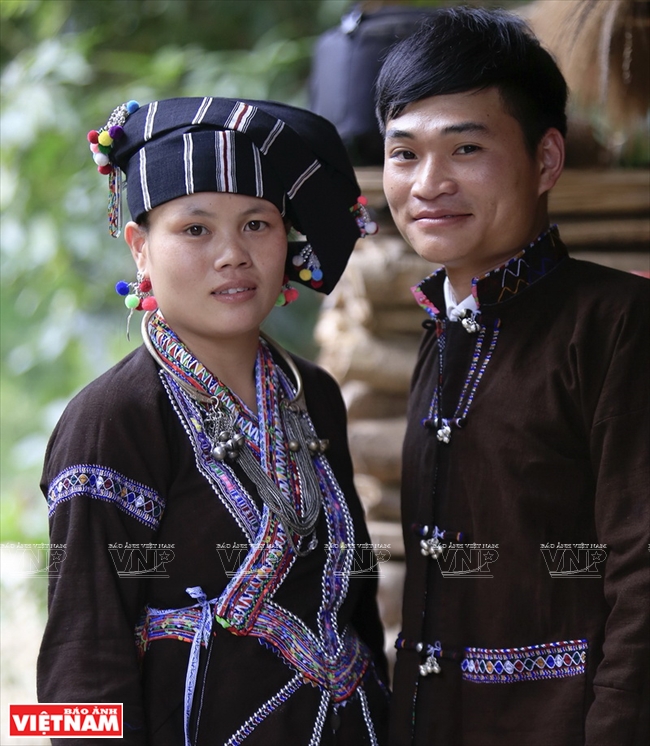
The Ly bride and groom in their traditional costumes with sosphiticated patterns.
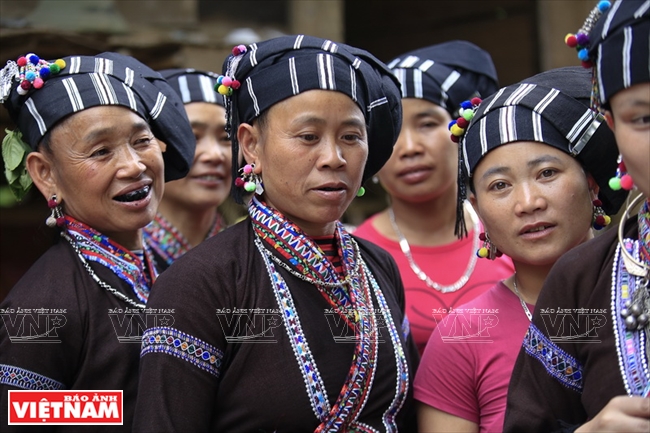
The Lu women in Tam Duong district, Lai Chau province. |
What is special in Lu women’s costumes is that their shirts are tailored in a fan shape with six pieces of cloth joined together into flaps broader than the waist section for the purpose of comfortable movement.
The collar is attached to a chest lath designed in successive green and red lozenges. The long sleeves are gradually tapered, edged at the end with small pieces of flower cloth and embroidered with patterns around sections close to the armpits.
The distinctiveness of the women’s costumes is also seen in their skirts made with three separate pieces of cloth, which are joined together in a tubular shape with three parts; the upper hem, the skirt body and the skirt foot. The skirt body is attached to the hem of the same patterns embroidered with big lozenges. The skirt foot is made of cotton cloth dyed black with nine squares of flower cloth of different colors running lengthwise from the skirt body to the turn-ups.
To create charm and softness between the shirt and the skirt, Lu women use a strap of coarse white cloth as a belt with embroidered patterns running transversally at both ends and yarn tassels at its tail. In addition, they usually wear necklaces.
The Lu ethnic
Other names: Lu, Nhuon and Duon
Population: 4,964 people (in 2009).
Residential place: Tam Duong and Sin Ho districts, Lai Chau province
Language: Tay-Thai
Culture: ancient stories, poetry, proverbs and "khau" folk songs
Music instruments: flutes
Economy: agriculture, cultivating rice, maize, potato, cassava, peanut and cotton
Cusine: sticky rice, fresh chilly, tea
(Source: The General Department of Tourism)
|
Story: Ngan Ha - Photos: Viet Cuong